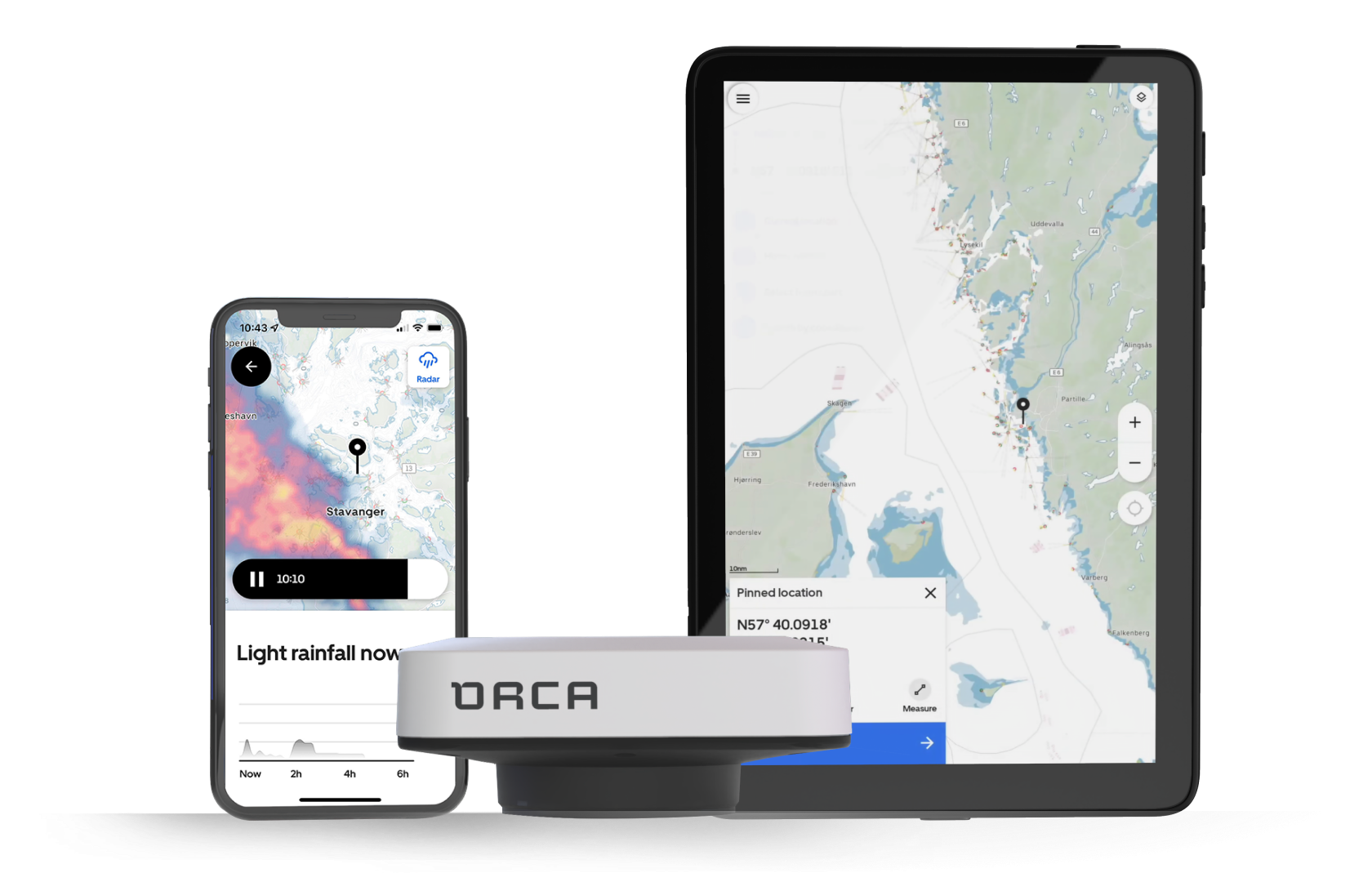All Articles
Next-generation Laylines
August 11, 2022 • 2 min read
Adaptive Laylines learn how you, your crew and your boat performs.

Laylines are important tools to help sailors visualize their optimal upwind sailing angles and for preparing the next tack.
Traditionally, laylines have been drawn from two sources: A polar diagram or a manually defined angle relative to the true wind.
Both approaches come with their own set of drawbacks – and the result is that the laylines shown by your traditional chartplotter often deviate significantly from how your boat is actually performing.
With an Orca CoPilot, inaccurate laylines are a thing of the past. This week's release, version 1.0.62, brings you Adaptive Laylines.
Laylines are shown in the chart. Sailing is sped up 5x to illustrate wind shifts.
Adaptive laylines are laylines that learn how your boat performs under current conditions.
To achieve this, Orca monitors your sailing performance and identifies which True Wind Angle (TWA) gives you the best upwind Velocity Made Good (VMG) for your current conditions and sail plan. Small changes in wind speed and direction allow Orca to progressively learn more about your performance as you sail.
This self-learning system is incredibly clever.
It is able to identify when you tack or have to give way and pauses learning during these maneuvers, so only stable upwind sailing is used to define your boat’s performance and consequently your boat's laylines.

Adaptive Laylines learn your optimal TWA angles as you sail upwind. Learning is paused during tacks and course corrections.
Laylines derived from polar diagrams – which is the most common approach used by traditional chartplotters – ignore waves, wind shear, the quality of your sails, and more importantly, the performance of you and your crew. Instead, they expect you to execute perfectly and sail your boat at your theoretical optimum. This is why you often end up short of your chartplotter’s laylines.
Because polar laylines is a poor representation of reality, a lot of sailors resort to setting their laylines manually – based on what they believe works best for them. While that often works better than polar laylines, fixed laylines don’t take into account that your boat’s performance changes with wind speed and other environmental factors. As a result, you’ll often have to keep changing your layline angles before and during sailing to keep them accurate.
Orca’s new Adaptive Laylines take into account all of these external factors along with your personal sailing performance. It means laylines in Orca reflect your true moment-to-moment sailing performance, not a theoretical optimum. This is why they are more accurate and reliable than laylines derived from polar diagrams and manually set laylines.
Orca's laylines adapt to your current sail plan, environment, and performance. Old data is discarded as new data improves its learning. You can even review how Orca is measuring your sail performance and finding your optimal Beat Angle with the VMG vs TWA graph.

This session was recorded in heavy waves at low wind speeds, which results in a flat graph top as the boat was constantly shifting heading upwind while fighting waves.
To get started with Adaptive Laylines, connect a wind sensor to your Orca Core. Laylines will be shown in the chart when you sail upwind, and after a few minutes of upwind sailing, the laylines will adapt to your boat’s performance.
Excited to improve your sailing game?
Order your Orca Core now. It’s delivered with free express shipping and backed by a 30-day satisfaction guarantee, so you can try Adaptive Laylines risk-free.





